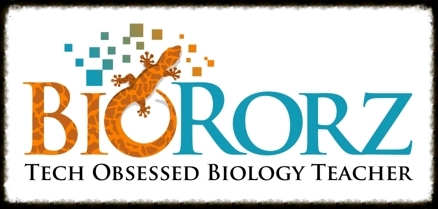Steal Like an Artist
http://img.sxsw.com/2012/spg_images/IAP10218.png
"The secret to creativity is knowing how to hide your sources."
This quote by Albert Einstein reminded me of a book that I read last year called Steal Like an Artist by Austin Kleon. If you haven't read it, stop reading this right now, and order yourself a copy. This book was like absolution for all of the amazing activities, ideas, and lessons that I have "borrowed" over the years and adopted as my own after infusing them with my own signature flare.
In his book, Kleon compares good theft to bad theft. Good theft is to honor another person's work rather than to degrade it (check). Good theft is to steal from many rather than just one (check). Good theft is to transform a piece of work rather than to just imitate it; remix rather than rip off (check, check).
In Kleon's list entitled, "10 things nobody told you about being creative", he states that the secret is to do good work and share it with people. The purpose of this blog is to do just that. I guess you could call it my penance for all of the good theft I have committed in my life as a career criminal/teacher. Can you tell I was raised in a Catholic family?
As promised in my last post, I wanted to share a great meiosis activity that I stole years ago from an anonymous source and made my own. I later discovered that a man named Harry Wong designed it originally, so thank you Harry! It is called, "Homologous Shoes".
On the day that I teach meiosis to my students, I make them take off their shoes and carelessly throw them in a designated area. I then carry on with my lesson for the day acting like nothing happened. When we get around to discussing prophase I of meiosis, I gather all of my students around the "nucleus" and we look at our two "sets of chromosomes" otherwise known as their left and right shoes randomly dispersed. Each pair of shoes represents a homologous pair. Though they are similar enough to be distinguished from all other pairs of shoes, they are not identical (left vs. right etc.).
We then begin synopsis. Each student is instructed to pick up the first shoe that they encounter that belongs to them with their left hand and the second shoe they encounter with their right hand. This helps to set us up for independent assortment in metaphase I. They then hold their shoes together in the form of a bivalent/ tetrad and we discuss chiasma formation and crossing over. I then have them line their shoes up along the "metaphase plate" and we make observations about their arrangement. I then ask them questions like, "If we were to start this activity over, what are the chances that the shoes would line up exactly like this a second time?". We then carry out anaphase I and segregate our alleles forming two distinctly different haploid nuclei.
At this point, I tell them that the smell has become so overwhelming that we will have to find a different strategy to learn about the second division of meiosis, and we switch focus. By combining the visual metaphor with the active manipulation of "chromosomes", this activity helps students to both understand and remember the unique events in meiosis that contribute to variation in a species, namely crossing over, independent assortment, and segregation of alleles.
Out of curiosity, I Googled this activity to see just how different my activity was from its original design. See for yourself, and thanks again Harry for doing good work and sharing it so that my students could benefit from OUR collective creativity year after year. After all, "Nothing is original." (Austin Kleon and countless others).

